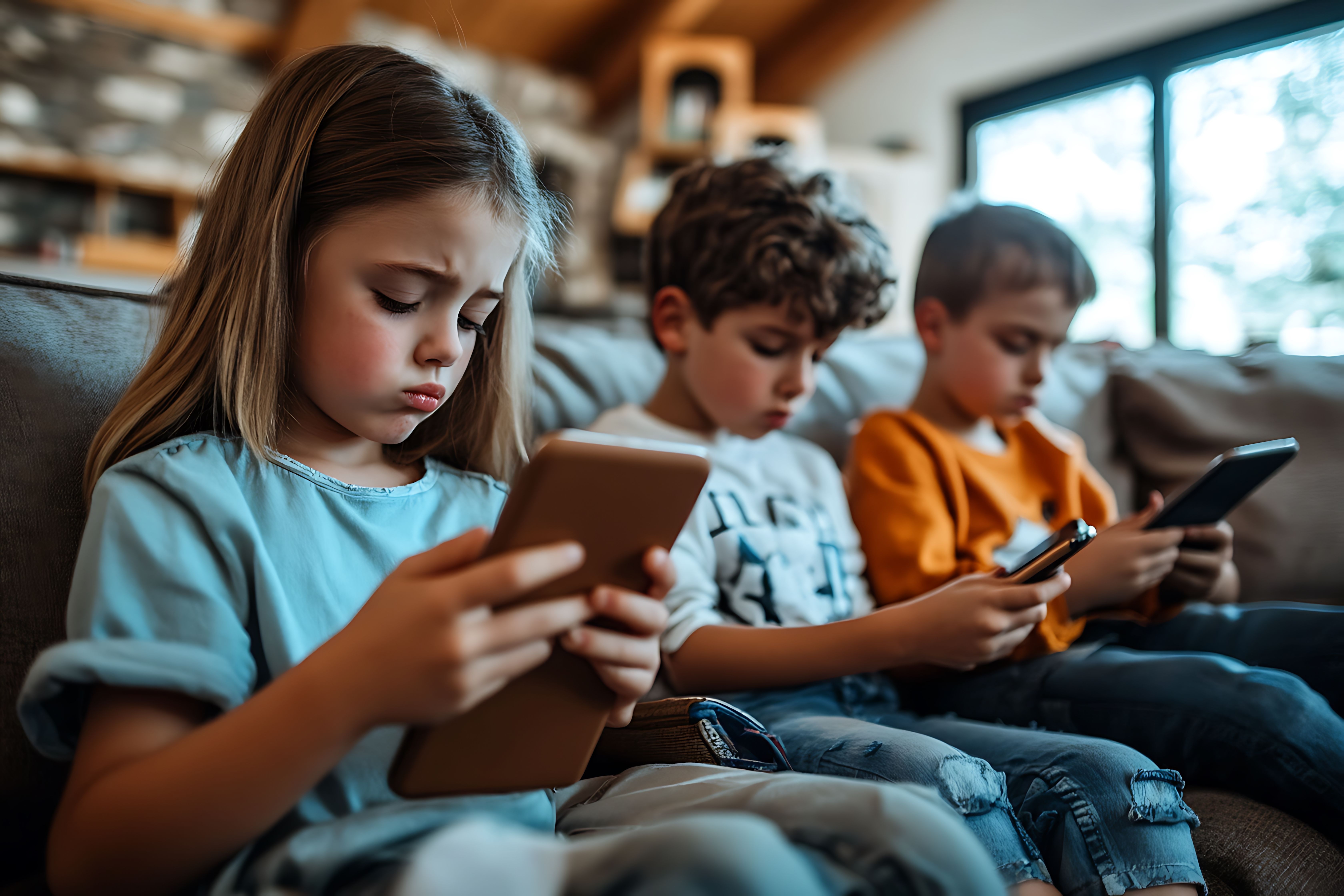digital parentingtechnology balancedigital educationpersonal development
18.07.2025
Screens and Child Development – Risk or Resource?

Today’s children live surrounded by technology – tablets, smartphones, smart TVs, and internet access everywhere. Unlike their parents, who grew up in an offline world, younger generations are “digital natives,” while parents are faced with the challenge of understanding a reality they never experienced as children.
Smartphones have become ubiquitous, and internet access begins at increasingly younger ages. Recent studies show that children receive their first mobile phone at an average age of 10 years and 7 months, and by age 12, most already own a smartphone. In parallel, data from Qustodio indicates a rise in the time children spend on platforms like TikTok, reaching 127 minutes per day in 2023.
Despite its apparent usefulness, unsupervised technology use poses many risks. Children can be exposed to inappropriate content, may develop social media or internet addiction, can fall victim to cyberbullying, or suffer from sleep disturbances, concentration problems, and even emotional imbalances. The absence of active parental control means unlimited access to a digital world that is difficult to manage at a young age.
The World Health Organization recommends completely avoiding screens for children under 1 year old and limiting screen time to a maximum of one hour per day for those aged 2 to 5. In practice, these limits are often exceeded. And the consequences quickly follow: attention difficulties, delays in language development, reduced empathy, and an increasing tendency toward cognitive passivity. Studies show that prolonged screen exposure can negatively affect the brain’s left hemisphere, which is responsible for concentration and analysis.
Moreover, the lack of free play – the foundation of early childhood development – is another major issue. Children spend less and less time in real-life interactions and more in front of a screen. This substitution affects socialization skills, imagination, and emotional autonomy. From difficulty expressing emotions to lack of motivation for activities without digital stimulation, the signs may be subtle but have a significant long-term impact.
As parents, it’s essential to embrace the role of digital guide. We cannot eliminate technology entirely, but we can integrate it responsibly into our children’s lives. Here are a few concrete directions:
- Set clear screen time limits adapted to your child’s age.
- Choose educational, positive, age-appropriate content.
- Watch together – discuss, ask questions, and turn digital experiences into relational activities.
- Exclude screens during meals, before bedtime, and while doing homework.
- Introduce engaging alternative activities: outdoor play, reading, drawing, building, music.
- Encourage emotional autonomy – teach your child to manage frustration without a screen.
Technology is not the enemy in itself. It can be a valuable resource for learning, exploration, and communication. But the key remains balance – between digital and real, between stimulation and stillness, between screen comfort and the challenges of the real world.
Our children don’t just need internet access. They need guidance, clear boundaries, and above all, real connection. Active parental presence makes the difference between a child overwhelmed by screens and one who uses them intelligently and healthily.
How the Tutorina App Can Help You
For parents who want more than just "blocking screen time," Tutorina is a complete educational solution. The app was developed in collaboration with psychologists and introduces a system of parent–child negotiation and cooperation, through which children learn to respect limits and daily priorities.
- The child unlocks screen time through productive activities: reading, homework, exercise.
- You set boundaries, filter content, and receive real-time notifications.
- Avoid conflict and build healthy habits together.
Tutorina isn’t just an app. It’s a partner in your child’s digital education.


